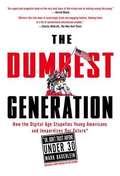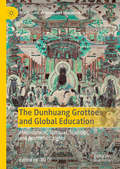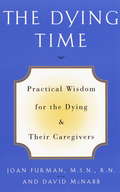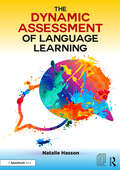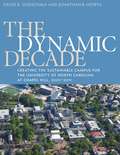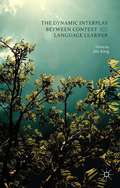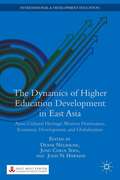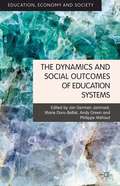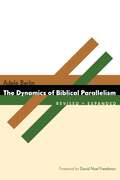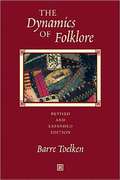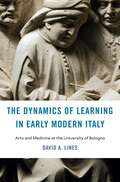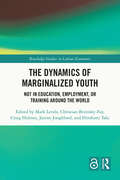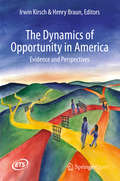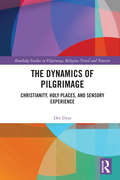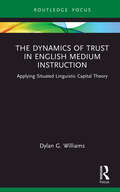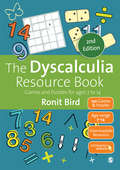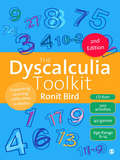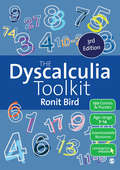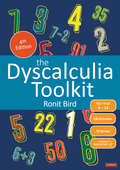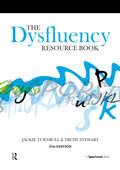- Table View
- List View
The Dumbest Generation
by Mark BauerleinThis shocking, surprisingly entertaining romp into the intellectual nether regions of today's underthirty set reveals the disturbing and, ultimately, incontrovertible truth: cyberculture is turning us into a society of know-nothings. .
The Dumbest Generation
by Mark BauerleinThis shocking, surprisingly entertaining romp into the intellectual nether regions of today's underthirty set reveals the disturbing and, ultimately, incontrovertible truth: cyberculture is turning us into a society of know-nothings. The Dumbest Generation is a dire report on the intellectual life of young adults and a timely warning of its impact on American democracy and culture. For decades, concern has been brewing about the dumbed-down popular culture available to young people and the impact it has on their futures. But at the dawn of the digital age, many thought they saw an answer: the internet, email, blogs, and interactive and hyper-realistic video games promised to yield a generation of sharper, more aware, and intellectually sophisticated children. The terms "information superhighway" and "knowledge economy" entered the lexicon, and we assumed that teens would use their knowledge and understanding of technology to set themselves apart as the vanguards of this new digital era. That was the promise. But the enlightenment didn't happen. The technology that was supposed to make young adults more aware, diversify their tastes, and improve their verbal skills has had the opposite effect. According to recent reports from the National Endowment for the Arts, most young people in the United States do not read literature, visit museums, or vote. They cannot explain basic scientific methods, recount basic American history, name their local political representatives, or locate Iraq or Israel on a map. The Dumbest Generation: How the Digital Age Stupefies Young Americans and Jeopardizes Our Future is a startling examination of the intellectual life of young adults and a timely warning of its impact on American culture and democracy. Over the last few decades, how we view adolescence itself has changed, growing from a pitstop on the road to adulthood to its own space in society, wholly separate from adult life. This change in adolescent culture has gone hand in hand with an insidious infantilization of our culture at large; as adolescents continue to disengage from the adult world, they have built their own, acquiring more spending money, steering classrooms and culture towards their own needs and interests, and now using the technology once promoted as the greatest hope for their futures to indulge in diversions, from MySpace to multiplayer video games, 24/7. Can a nation continue to enjoy political and economic predominance if its citizens refuse to grow up? Drawing upon exhaustive research, personal anecdotes, and historical and social analysis, The Dumbest Generation presents a portrait of the young American mind at this critical juncture, and lays out a compelling vision of how we might address its deficiencies. The Dumbest Generation pulls no punches as it reveals the true cost of the digital age--and our last chance to fix it.
The Dunhuang Grottoes and Global Education: Philosophical, Spiritual, Scientific, and Aesthetic Insights (Spirituality, Religion, and Education)
by Xu DiThis book analyzes the murals and texts of the Dunhuang Grottoes, one of the most famous sites of cultural heritage on the Silk Road in Northwest China, from an educational perspective. The Dunhuang Grottoes are well-known in the world for their stunning beauty and magnificence, but the teaching of Dunhuang advocates a philosophical perspective that cosmos, nature, and humanity are an interconnected whole, and that all elements function interactively according to universal and relational principles of continuity, cause-and-effect, spiritual connection, and enlightenment. Xu Di and volume contributors highlight the moral education and ethics found throughout the Dunhuang with numerous stories of the personal journeys and growth of the Buddha and bodhisattvas, discussing and analyzing these teachings, and their possible implications for modern education systems throughout China and the world today.
The Dying Time
by Joan Furman David Mcnabb"One of the best books available on caring for the dying, The Dying Time combines deep insight and down-to-earth practicality. All caregivers need to know what's between these covers. This book demystifies the process of death, yet honors the sacredness of life's final transition. Highly recommended." Larry Dossey, M.D., author of Prayer Is Good Medicine"Living until we die can be difficult. This book can guide you through that time. It is practical, spiritual, and filled with wisdom."Bernie S. Siegel, M.D., author of Love, Medicine, and MiraclesHere is a comprehensive and thorough handbook for the dying and their caregivers. Joan Furman and David McNabb walk the reader through the dying time, providing details on how to make the environment conducive to peace and tranquillity, give physical care, understand and respond to the emotional and spiritual crises that naturally occur, and stay healthy as a caregiver. They answer with honesty and sensitivity the questions most frequently asked, such as what actually happens at the time of death. The book also deals with arranging for a meaningful memorial service and handling grief for those who are left behind. And it offers guided imagery for coping with pain and suggests literature and music to ease the passage of those whose health is irreversibly failing.From the Trade Paperback edition.
The Dynamic Assessment of Language Learning
by Natalie HassonThis is a practical, accessible manual for Speech and Language Therapists, Educational Psychologists and Educators who assess children with language impairments, explaining how and why to implement Dynamic Assessment and gives you a huge range of ready-to-use, practical tools. Where normal assessments simply identify deficits, Dynamic Assessment also identifies the child's potential to learn by allowing for prompts from you, during the assessment, thus far better informing your decisions about appropriate interventions and strategies to help the children you work with. What does this manual offer? Provides a concise introduction to the principles of Dynamic Assessment to make clear the enormous benefits of applying this approach to the assessment of language. Presents a full example of a Dynamic Assessment of Sentence Structure (DASS) to demonstrate how the principles are implemented and the findings applied to plan more effective interventions. All the materials for the DASS are included so that you can use this assessment immediately. Includes numerous templates, generic prompt sheets, score sheets and materials that you can adapt for use in Dynamic Assessments that you devise yourself. Written by Dr Natalie Hasson, a highly experienced Speech and Language Therapist who leads the field in researching the dynamic assessment of language, this is the only Dynamic Assessment manual of its kind.
The Dynamic Decade
by David R. Godschalk Jonathan B. HowesThe Dynamic Decade tells the story of the sweeping makeover of the 200-year old campus of the University of North Carolina. Six million square feet of new buildings were constructed and a million square feet of historic buildings were renovated during one vibrant ten-year period. To make this massive growth work required bold thinking. A new Master Plan created a vision for combining historic preservation, green building, and long-range development. A statewide bond issue for higher education capital facilities, supplemented with outside support, generated $1.5 billion in capital funding. Previous town-gown tensions were swept aside as university officials and elected leaders collaborated on critical planning and zoning innovations. Award-winning plans and designs inspired new student living and learning communities. University facilities and construction staff doubled and a design review board formed to handle the increased load of new projects. Detailed design guidelines ensured that new development would be compatible with the traditional campus landscape as well as sensitive to environmental conservation. Written by authors who held major planning roles and supplemented with key player interviews, the book describes the politics, planning, and design that shaped the Dynamic Decade. Lavishly illustrated with color photographs and maps, this comprehensive account offers valuable lessons to all concerned with sustainable university growth.
The Dynamic Interplay between Context and the Language Learner
by Jim KingThis edited volume offers a series of state-of-the-art conceptual papers and empirical research studies which consider how contextual factors at multiple levels dynamically interact with individuals to influence how they go about the complex business of learning and using a second language.
The Dynamics Of Higher Education Development In East Asia
by Jung Cheol Shin John N. Hawkins Deane NeubauerThis book examines four theses regarding Asian higher education and development: interplay between cultural traditions, economic development, globalization, and the evolution of the 'hybrid' university. Top scholars evaluate these hypotheses and determine the elements shaping the history and present circumstances of Asia-Pacific higher education.
The Dynamics and Social Outcomes of Education Systems
by Andy Green Jan Germen Janmaat Marie Duru-Bellat Philippe M�hautThis collection critically examines the dynamics and social outcomes of systems of lifelong learning.
The Dynamics of Biblical Parallelism (The Biblical Resource Series)
by Adele BerlinUnderstanding of biblical poetry is enhanced by the study of its structure. In this book Adele Berlin analyzes parallelism, a major feature of Hebrew poetry, from a linguistic perspective. This new edition of Berlin's study features an additional chapter, "The Range of Biblical Metaphors inSmikhut,"by late Russian linguist Lida Knorina. Berlin calls this addition "innovative and instructive to those who value the linguistic analysis of poetry." It is a fitting coda to Berlin's adept analysis.
The Dynamics of Educational Effectiveness: A Contribution to Policy, Practice and Theory in Contemporary Schools (Contexts of Learning)
by Bert Creemers Leonidas KyriakidesThis book brings together the current thinking and research of two major investigators in the field of educational effectiveness. After defining educational effectiveness, the authors analyse the various theories and strands of research within educational effectiveness, especially with respect to the comprehensive model developed by Creemers. Written by one of the worlds leading experts in the field, this book will both elucidate our current understanding of educational effectiveness and carry the discipline forward by proposing profound changes to accepted views.
The Dynamics of Folklore
by Barre ToelkenOne of the most comprehensive and widely praised introductions to folklore ever written. Toelken's discussion of the history and meaning of folklore is delivered in straightforward language, easily understood definitions, and a wealth of insightful and entertaining examples. Toelken emphasises dynamism and variety in the vast array of folk expressions he examines, from "the biology of folklore," to occupational and ethnic lore, food ways, holidays, personal experience narratives, ballads, myths, proverbs, jokes, crafts, and others. Chapters are followed by bibliographical essays, and over 100 photographs illustrate the text. This new edition is accessible to all levels of folklore study and an essential text for classroom instruction.
The Dynamics of Learning in Early Modern Italy: Arts and Medicine at the University of Bologna (I Tatti Studies in Italian Renaissance History)
by David A. LinesA pathbreaking history of early modern education argues that Europe’s oldest university, often seen as a bastion of traditionalism, was in fact a vibrant site of intellectual innovation and cultural exchange.The University of Bologna was among the premier universities in medieval Europe and an international magnet for students of law. However, a long-standing historiographical tradition holds that Bologna—and Italian university education more broadly—foundered in the early modern period. On this view, Bologna’s curriculum ossified and its prestige crumbled, due at least in part to political and religious pressure from Rome. Meanwhile, new ways of thinking flourished instead in humanist academies, scientific societies, and northern European universities.David Lines offers a powerful counternarrative. While Bologna did decline as a center for the study of law, he argues, the arts and medicine at the university rose to new heights from 1400 to 1750. Archival records show that the curriculum underwent constant revision to incorporate contemporary research and theories, developed by the likes of René Descartes and Isaac Newton. From the humanities to philosophy, astronomy, mathematics, and medicine, teaching became more systematic and less tied to canonical texts and authors. Theology, meanwhile, achieved increasing prominence across the university. Although this religious turn reflected the priorities and values of the Catholic Reformation, it did not halt the creation of new scientific chairs or the discussion of new theories and discoveries. To the contrary, science and theology formed a new alliance at Bologna.The University of Bologna remained a lively hub of cultural exchange in the early modern period, animated by connections not only to local colleges, academies, and libraries, but also to scholars, institutions, and ideas throughout Europe.
The Dynamics of Marginalized Youth: Not in Education, Employment, or Training Around the World (Routledge Studies in Labour Economics)
by Mark LevelsThis book studies young people who are Not in Education, Employment, or Training (NEET); a prime concern among policymakers. Moving past common interpretations of NEETs as a homogeneous group, it asks why some youth become NEET, whereas other do not. The authors analyse diverse school-to-work patterns of young NEETs in five typical countries and investigate the role of individual characteristics, countries’ institutions and policies, and their complex interplay. Readers will come to understand youth marginalization as a process that may occur during the transition from school, vocational college, or university to work. By studying longitudinal analyses of processes and transitions, readers will gain the crucial insight that NEETs are not equally vulnerable, and that most NEETs will find their way back to the labour market. However, they will also see that in all countries, a group of long-term NEETs exists. These exceptionally vulnerable young people are sidelined from society and the labour market. The country cases and cross-national studies illustrate that policies intended to help long-term NEETs to find their way in society are very limited. The book provides useful theoretical and empirical insights for scholars interested in the school-to-work transition and marginalized youth. It also provides helpful insights in vulnerability to policymakers who aim to combat youth marginalization.
The Dynamics of Opportunity in America
by Irwin Kirsch Henry BraunAcross the country, our children are beginning life from very different starting points. Some have aspirations and believe they can be achieved. For too many others, aspirations are tempered, if not dashed, by the sobering realities of everyday life. These different starting points place children on distinctly different trajectories of growth and development, ultimately leading to vastly different adult outcomes. How did we get to a place where circumstances of birth have become so determinative? And what must we do, within communities and across our country, to better equalize opportunity for more Americans - both young and old? The editors of this volume contend that if, as a nation, we do nothing, then we will continue to drift apart, placing an unsustainable strain on the nation's social fabric and the character of its democracy. Consequently, understanding the dynamics governing the distribution and transmission of opportunity - and transforming this understanding into policies and programs - is critical for not only the life outcomes of individual Americans and their children, but also the country as a whole. The goal of Educational Testing Service's Opportunity in America initiative is to explore these powerful dynamics and to describe and convey them in a way that advances the national conversation about why we must take action - and how best to do so. This volume contains 13 chapters and an epilogue written by leaders from a range of fields including education, economics, demography, and political science. Collectively, they not only illuminate key aspects of the problem but also offer suggestions of what policies, programs, and changes in practices could begin to reverse the trends we are seeing. Written in an engaging style, this volume constitutes an essential foundation for informed discussion and strategic analysis.
The Dynamics of Pilgrimage: Christianity, Holy Places, and Sensory Experience (Routledge Studies in Pilgrimage, Religious Travel and Tourism)
by Dee DyasThis book offers a systematic, chronological analysis of the role played by the human senses in experiencing pilgrimage and sacred places, past and present. It thus addresses two major gaps in the existing literature, by providing a broad historical narrative against which patterns of continuity and change can be more meaningfully discussed, and focusing on the central, but curiously neglected, area of the core dynamics of pilgrim experience. Bringing together the still-developing fields of Pilgrimage Studies and Sensory Studies in a historically framed conversation, this interdisciplinary study traces the dynamics of pilgrimage and engagement with holy places from the beginnings of the Judaeo-Christian tradition to the resurgence of interest evident in twenty-first century England. Perspectives from a wide range of disciplines, from history to neuroscience, are used to examine themes including sacred sites in the Bible and Early Church; pilgrimage and holy places in early and later medieval England; the impact of the English Reformation; revival of pilgrimage and sacred places during the nineteenth and twentieth Centuries; and the emergence of modern place-centred, popular 'spirituality'. Addressing the resurgence of pilgrimage and its persistent link to the attachment of meaning to place, this book will be a key reference for scholars of Pilgrimage Studies, History of Religion, Religious Studies, Sensory Studies, Medieval Studies, and Early Modern Studies.
The Dynamics of Trust in English Medium Instruction: Applying Situated Linguistic Capital Theory (Routledge Focus on English-Medium Instruction in Higher Education)
by Dylan WilliamsThis book explores South Korean university students’ perceptions of the English Medium Instruction (EMI) courses they have taken. It specifically examines how the interplay of linguistic capital and trust shapes their EMI experiences.In South Korea, the implementation of neoliberal EMI policies, driven by a 'top-down' approach, has failed to adequately address the linguistic challenges faced by stakeholders. The setting for the book is a research-intensive university, where data were collected from ten engineering and business students through semi-structured interviews and analysed using Constructivist Grounded Theory (CGT), enabling a grounded understanding of the students’ perceptions. The areas investigated are students’ perceptions of their past experiences, of their access to subject content, and of how interactions take shape in their EMI experiences. Emerging from the analysis is a dynamic between trust and linguistic capital, which has been shaped by the past and which affects the future, leading to epistemic outcomes. The results indicate that monolingually framed trust in situated-linguistic codes plays a role in the students’ EMI experiences, and from this ‘Situated-Linguistic Capital Theory’ emerges. The theory indicates that monolingually framed trust reinforces binary choices, in particular EMI situations, of using either the L1 or the L2 system, which can lead to potential epistemic outcomes. The book concludes with a discussion of the factors that can determine the future success of EMI in South Korea.This volume will be of interest to researchers and postgraduate students examining English Medium Instruction and its success in different higher education contexts.
The Dyscalculia Resource Book: Games and Puzzles for ages 7 to 14
by Ronit BirdWritten by a teacher for teachers, the second edition of Ronit Bird’s The Dyscalculia Resource Book now comes with 120 games and puzzles and a brand new section on ‘mixed operations puzzles’ which require learners to switch mentally between addition, subtraction, multiplication and division. The new edition will also provide access to an accompanying website featuring demo videos of different games and puzzles and the option to easily download and print all the games and puzzles in the book! Ideal for working with students 7 to 14 years old, this is the perfect companion to The Dyscalculia Toolkit, essential additions to every teachers’ resource collection.
The Dyscalculia Resource Book: Games and Puzzles for ages 7 to 14
by Ronit BirdWritten by a teacher for teachers, the second edition of Ronit Bird’s The Dyscalculia Resource Book now comes with 120 games and puzzles and a brand new section on ‘mixed operations puzzles’ which require learners to switch mentally between addition, subtraction, multiplication and division. The new edition will also provide access to an accompanying website featuring demo videos of different games and puzzles and the option to easily download and print all the games and puzzles in the book! Ideal for working with students 7 to 14 years old, this is the perfect companion to The Dyscalculia Toolkit, essential additions to every teachers’ resource collection.
The Dyscalculia Toolkit
by Ronit BirdWith over 200 activities and 40 games this book is designed to support learners aged 6 to 14 years, who have difficulty with maths and numbers. Ronit Bird provides a clear explanation of dyscalculia, and presents the resources in a straightforward fashion.<P><P> New to this second edition:<P> - even more activities, games and printable resources <P> - additional material, provided on the easily accessible CD-ROM<P> - a table indicating which difficulties are supported by which activities<P> - material that caters for a wider range of abilities and ages.<P> This book and accompanying CD meet the needs of specialist and non-specialist teachers who are working with learners with difficulties in maths in mainstream settings. It is equally useful as a resource to recommend to parents who want to support their children's learning.
The Dyscalculia Toolkit: Supporting Learning Difficulties in Maths
by Ronit BirdThe new edition of the bestselling Dyscalculia Toolkit continues to meet the needs of specialist and non-specialist teachers working with learners aged 6 to 14 years, who have difficulty with maths and number. Now with over 200 activities and 50 games, new and improved illustrations, and an expanded list of recommended readings, useful websites & resources, the new edition also includes exclusive access to a brand new companion website which features; - 10 videos with over 45 minutes of material demonstrating a selection of games from every section - Editable pupil tracking sheets organised by teaching point and section - Over 70 pages of downloadable and printable teaching materials including activity sheets, game boards, teaching resources & summary tables. Packed full of practical, creative and innovative ideas and strategies this is the complete toolkit to help teachers and parents support learners with dyscalculia or those struggling with mathematics.
The Dyscalculia Toolkit: Supporting Learning Difficulties in Maths
by Ronit BirdThe new edition of the bestselling Dyscalculia Toolkit continues to meet the needs of specialist and non-specialist teachers working with learners aged 6 to 14 years, who have difficulty with maths and number. Now with over 200 activities and 50 games, new and improved illustrations, and an expanded list of recommended readings, useful websites & resources, the new edition also includes exclusive access to a brand new companion website which features; - 10 videos with over 45 minutes of material demonstrating a selection of games from every section - Editable pupil tracking sheets organised by teaching point and section - Over 70 pages of downloadable and printable teaching materials including activity sheets, game boards, teaching resources & summary tables. Packed full of practical, creative and innovative ideas and strategies this is the complete toolkit to help teachers and parents support learners with dyscalculia or those struggling with mathematics.
The Dyscalculia Toolkit: Supporting Learning Difficulties in Maths (Corwin Ltd)
by Ronit BirdDesigned for all teachers, this book provides a wealth of materials and resources to support the needs of learners, aged 6 to 14 years, who have difficulty with maths and number. Packed full with 220 activities and 55 games, the author provides you with a complete toolkit to enable you to understand dyscalculia and implement practical and innovative strategies to use in the classroom or at home. This fourth edition is updated with new content including: - more on dice and board games, multiplication and division; - new downloadable and printable teaching materials (including tracking sheets, activity sheets, game boards and teaching resources); - updated videos.
The Dyscalculia Toolkit: Supporting Learning Difficulties in Maths (Corwin Ltd)
by Ronit BirdDesigned for all teachers, this book provides a wealth of materials and resources to support the needs of learners, aged 6 to 14 years, who have difficulty with maths and number. Packed full with 220 activities and 55 games, the author provides you with a complete toolkit to enable you to understand dyscalculia and implement practical and innovative strategies to use in the classroom or at home. This fourth edition is updated with new content including: - more on dice and board games, multiplication and division; - new downloadable and printable teaching materials (including tracking sheets, activity sheets, game boards and teaching resources); - updated videos.
The Dysfluency Resource Book
by Jackie Turnbull Trudy StewartThis is a comprehensive resource book for treating adults who stammer. Completely revised and updated to take account of current practice, this new edition draws together the latest information on therapy for adults along with practical examples of exercises, tasks and activities that can be used for both individual and group programmes. With new chapters and therapy ideas, this is an extremely useful resource for all speech & language therapists and students working with adults who stammer. This useful resource seeks to explain techniques for treating people who stammer and the rationale for their use. This volume forms a catalogue of treatment options from which clinicians may choose to use all of the techniques or pick out particular sections according to their clients' special requirements. The first edition of this book proved to be a very useful tool for speech and language professionals, and this new edition has come about largely because clinicians, speech and language therapists and teachers have requested it. With the inclusion of 50 photocopiable handouts and the presentation of the chapters in the order they would use with their own group programmes, the authors set out the principles of therapy in such a way that the treatment techniques fit into a clear management approach. Trudy Stewart is a specialist in dysfluency and has been a service manager since 1986. She studied in America and obtained her PhD in 1991. Jackie Turnbull retired from SLT in July 2009 after 40 years in the profession, over 35 of which were spent as a specialist in dysfluency, working with children and adults. She also worked for many years as a staff counsellor in a large hospital. The collaboration that has grown up between the two of them has sparked further study in stammering. Together they have developed a highly creative clinical practice which has national recognition.
